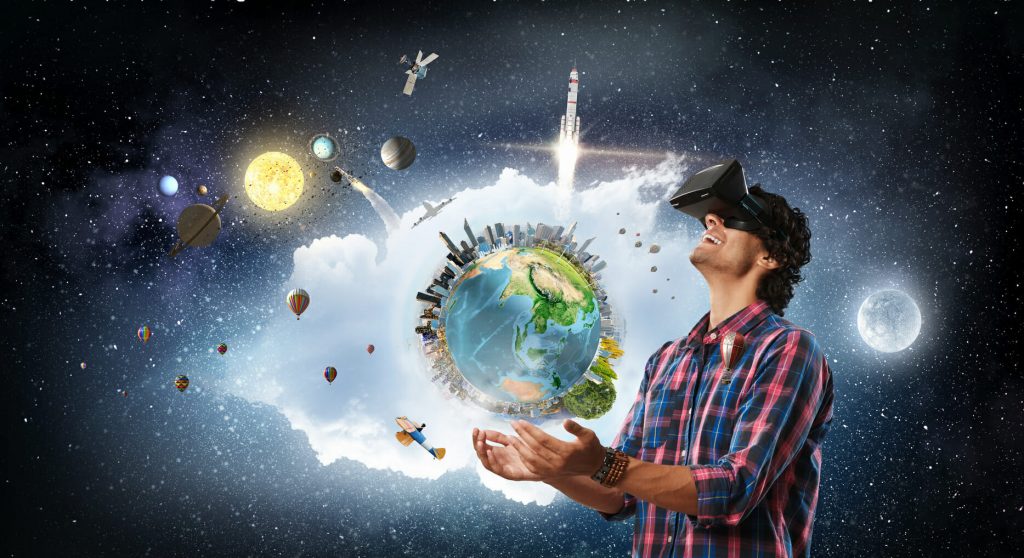Using virtual reality to advertise a nonprofit is a great way to stand out from the crowd. The lowering cost of equipment and the curiosity behind emerging technologies makes the VR marketing idea seem quite attractive. Most nonprofits already have a website and videos, though, so what makes VR so special?
VR works by putting the donor right in the heart of the situation. VR takes a person and places them somewhere outside of their comfort zone, prompting awareness, empathy, and action on their part. The experience can be far more effective than the average pamphlet, website or documentary.
Removes The Societal Bubble
Donors can’t give to a cause if they were unaware of it in the first place. Basic advertising helps with awareness, but VR tells the individual exactly what your organization combats and what makes your mission important.
Many of us remain caught up in our everyday lives, oblivious to outside problems that do not to affect us personally. For instance, various animal species go extinct each day and our routines don’t suffer because of this tragedy. Lack of awareness in regards to important issues sounds cruel, but we’re all culprits.
The lack of awareness has the ability to change, though, especially when coupled with VR technologies. This is particularly true for wildlife. Fountain Digital CEO Svetlana Dragayeva has brought the woodlands and savanna to everyone with the Virry VR interactive experience. Using Virry, people can “drop” food in front of a camera and virtually experiences animals like elephants, baboons, lions and hyenas in a more intimate and natural environment than any zoo could hope to accomplish.
Virry takes an environment totally unfamiliar to most people and puts them in the center. Potential donors can experience something they never have before, create memories to share with others and realize why they need to help.
The Problem Becomes Real
The real win in VR’s court is the intimate nature of the technology. The nonprofit’s audience not only experiences the situation through someone else’s eyes, but VR puts the potential donor in someone else’s position.
A VR video called The Source documented the life of a 13-year-old Ethiopian girl, Selam, as she and her community received clean water for the first time. Most people have some awareness of the need for clean water in many countries, but watching the experience from the first-person perspective of a child makes the situation real and urgent.
A highlight of the intimacy aspect of a VR experience involves the minimal effort on the consumer’s part. An experience reserved for those partaking in a situational crisis is brought into the living rooms of potential donors or public spaces. The donor can experience a real problem in a place as far as away as Ethiopia without traveling there.
Inspiration Strikes
Nothing invokes a person’s involvement with a cause more than a first-hand experience. While VR makes it easy for a person to remove themselves from the situation, the imagery and message are more likely to stick as opposed to other more traditional ways of advertising.
Donors experience something intimately real and perhaps entirely uncomfortable, making them want to do something about the problem.
Amnesty International’s Fear of the Sky allows a user to experience the harrowing scenes of Aleppo, Syria. After promoting the VR film on the street, Amnesty International noted a 16 percent increase in sign-ups for second-time donations.
The trick with Fear of the Sky was the location they advertised the VR film. The streets of the ruined Aleppo mirrored the intact street the potential donor stood on — this made the need personal. Many people are aware of the situation in Syria, but heinous tragedies can be hard to acknowledge as real until you experience it occurs.
VR Is About More Than Money
Creating empathy and support for the mission you serve is a wonderful thing, but VR can act as more than that for a nonprofit mission. VR shines most as a tool for education.
Similar to how VR can affect the will of potential donors, it can also create a far better understanding of other people’s plight. Crossing borders without leaving home and promoting critical thinking and open-mindedness for everyone can help people see VR as more than a venue for advertising.
Co-founder of UNICEF’s Innovation Unit, Christopher Fabian, believes VR is a tool for collaboration and to inspire people to reach out to world problems on a much larger scale.
Your nonprofit deserves recognition and support. VR is the future of empathetic understanding and informed decision making. Embracing VR technology can help lead your nonprofit organization to carry out its intended mission.
Bio: Nathan Sykes is a technology and business writer from Pittsburgh, PA. To read his latest articles, check out his blog, Finding an Outlet.



